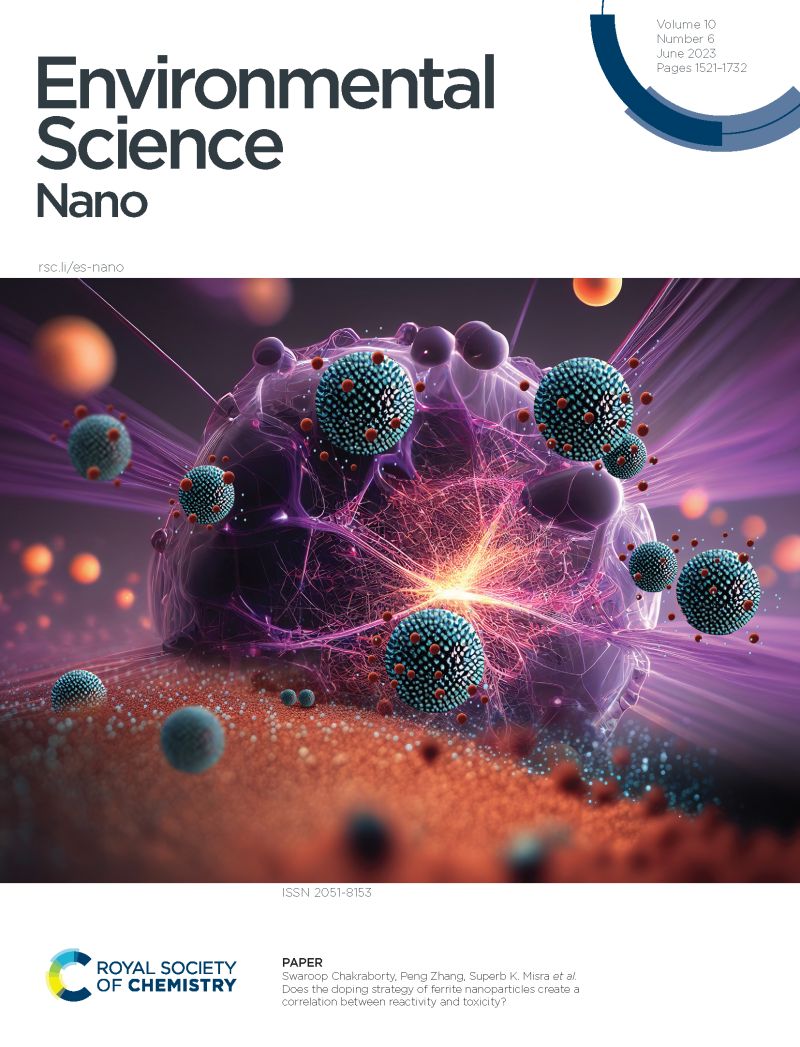Exploring environmental nanobiogeochemistry with field-flow fractionation and ICP-MS-based tools: Background and fundamentals
IF 5.8
2区 环境科学与生态学
Q1 CHEMISTRY, MULTIDISCIPLINARY
引用次数: 0
Abstract
Recent application of sophisticated instrumentation and novel experimental techniques to environmental systems has driven the study of natural nanoparticles and nanoparticle systems towards new horizons. Moving beyond the detection of engineered nanoparticles in natural systems, these technologies create new knowledge about the composition, behaviour, and functions of natural nanoparticles both as individual entities and particle systems. In this first part of a two-part Perspective article, we define the emerging field of environmental nanobiogeochemistry and describe the fundamentals, optimization, and advantages/disadvantages of field-flow fractionation and ICP-MS-based techniques for advancing our understanding of natural nanoscale particles and particle systems. The companion paper, Exploring environmental nanobiogeochemistry with field-flow fractionation and ICP-MS-based tools: Progress and frontiers, describes progress and frontiers in this research area using case studies drawn from a range of published and unpublished data cutting across environmental systems. By combining necessary background with the most recent findings and key challenges, these contributions provide key knowledge for both new and established researchers entering this exciting field, and lay the groundwork for future research.利用场流分馏和icp - ms工具探索环境纳米生物地球化学:背景和基础
近年来,先进的仪器和新颖的实验技术在环境系统中的应用,推动了天然纳米颗粒和纳米颗粒系统的研究向新的方向发展。这些技术超越了对自然系统中工程纳米粒子的检测,创造了关于天然纳米粒子作为个体实体和粒子系统的组成、行为和功能的新知识。在这篇由两部分组成的展望文章的第一部分中,我们定义了环境纳米生物地球化学这一新兴领域,并描述了场流分馏法和基于icp - ms的技术的基本原理、优化和优缺点,以促进我们对天然纳米级颗粒和颗粒系统的理解。论文《利用场流分馏和基于icp - ms的工具探索环境纳米生物地球化学:进展与前沿》描述了这一研究领域的进展和前沿,使用了从一系列已发表和未发表的跨环境系统数据中提取的案例研究。通过将必要的背景与最新的发现和关键挑战相结合,这些贡献为进入这一令人兴奋的领域的新老研究人员提供了关键知识,并为未来的研究奠定了基础。
本文章由计算机程序翻译,如有差异,请以英文原文为准。
求助全文
约1分钟内获得全文
求助全文
来源期刊

Environmental Science: Nano
CHEMISTRY, MULTIDISCIPLINARY-ENVIRONMENTAL SCIENCES
CiteScore
12.20
自引率
5.50%
发文量
290
审稿时长
2.1 months
期刊介绍:
Environmental Science: Nano serves as a comprehensive and high-impact peer-reviewed source of information on the design and demonstration of engineered nanomaterials for environment-based applications. It also covers the interactions between engineered, natural, and incidental nanomaterials with biological and environmental systems. This scope includes, but is not limited to, the following topic areas:
Novel nanomaterial-based applications for water, air, soil, food, and energy sustainability
Nanomaterial interactions with biological systems and nanotoxicology
Environmental fate, reactivity, and transformations of nanoscale materials
Nanoscale processes in the environment
Sustainable nanotechnology including rational nanomaterial design, life cycle assessment, risk/benefit analysis
 求助内容:
求助内容: 应助结果提醒方式:
应助结果提醒方式:


